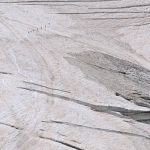What’s the Best Way to Navigate in the Wilderness
Venturing into the wilderness can be an exhilarating experience, offering a chance to connect with nature and escape the hustle and bustle of daily life. However, the vastness of untamed landscapes can also be disorienting, making navigation a crucial skill for any outdoor enthusiast. Whether you’re hiking through dense forests, scaling mountains, or traversing deserts, understanding the best ways to navigate can mean the difference between a memorable adventure and a harrowing ordeal.
Understanding Basic Navigation Tools
At the heart of wilderness navigation lies a set of essential tools that every adventurer should have. A reliable map and compass are timeless staples. Though technology has introduced GPS devices and smartphone apps, knowing how to read a topographic map and use a compass is invaluable, especially when faced with dead zones where signal may falter.
When using a compass, familiarize yourself with its components: the magnetic needle, the baseplate, and the degree markings. Start by orienting the map to your surroundings, ensuring that the map’s north aligns with the magnetic north indicated by your compass. From there, you can take bearings to identify your route and track your progress.
Harnessing the Power of Landmarks
Navigating in the wilderness doesn’t solely rely on tools; it also involves acute observation skills. Natural landmarks—such as rivers, mountains, or distinctive rock formations—can serve as visual cues. By recognizing these features on your map, you can create a mental map of your surroundings.
Additionally, paying attention to the sun’s position can provide critical insights. In the northern hemisphere, the sun rises in the east and sets in the west. Consequently, if you know the time of day, you can use the sun’s position to determine cardinal directions. For instance, if it’s mid-afternoon and the sun is on your right, you are likely facing north.
Taking Advantage of Technology
While traditional navigation methods are essential, modern technology can enhance your wilderness navigation experience. GPS devices can provide precise locations, making it easier to track your route. Smartphone applications that work offline can also serve as effective navigational aids, displaying your location in real-time and offering detailed maps of the area.
However, technology should not be your only reliance. Batteries can die, and devices can malfunction. Always carry backup navigation tools, and ensure you understand how to use them. Moreover, download maps prior to your trip in case you find yourself without a signal.
Practicing Situational Awareness
Situational awareness is a critical component of wilderness navigation. This involves being attuned to your surroundings and understanding how they relate to your chosen route. Pay attention to changes in terrain, weather conditions, and the behavior of wildlife. If you notice that the landscape is changing drastically, it may indicate that you are straying from your intended path.
Keep track of your surroundings by using a technique called “handrails.” Identify features like rivers, trails, or ridgelines that can guide you. If you find a feature that aligns with your route, follow it. This technique can help you stay oriented even in unfamiliar terrain.
Building Navigation Skills Through Practice
Like any skill, navigation improves with practice. Before embarking on a significant wilderness adventure, spend time honing your navigation abilities in familiar areas. Practice reading maps, taking bearings, and using a compass until you feel comfortable.
Consider joining navigation workshops or outdoor clubs that focus on wilderness skills. Engaging with experienced outdoors enthusiasts can provide valuable insights and help you build confidence in your navigation abilities.
Finding Your Way Home
In the wilderness, the ability to navigate is not just about reaching a destination; it’s about ensuring your safety and finding your way back. By mastering essential navigation tools, observing natural landmarks, leveraging technology, maintaining situational awareness, and continually practicing your skills, you can confidently explore the great outdoors.
Ultimately, wilderness navigation is about balancing traditional skills with modern advancements, allowing you to embrace the beauty of nature while ensuring your adventure remains safe and enjoyable. Embrace the journey, equip yourself wisely, and let the wilderness reveal its wonders.


